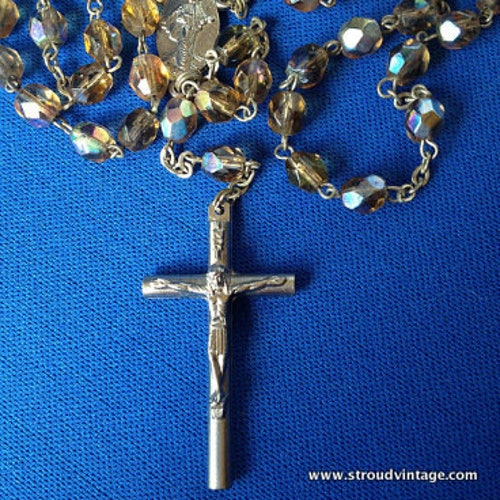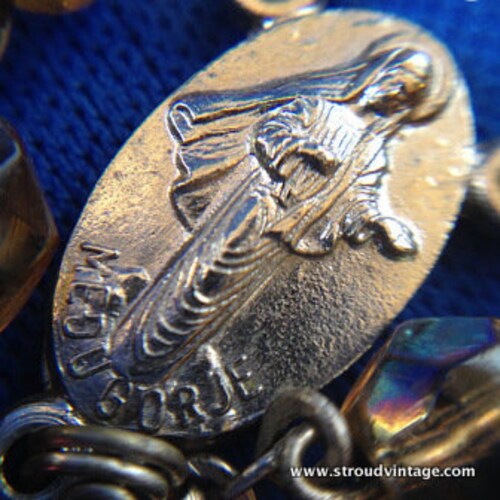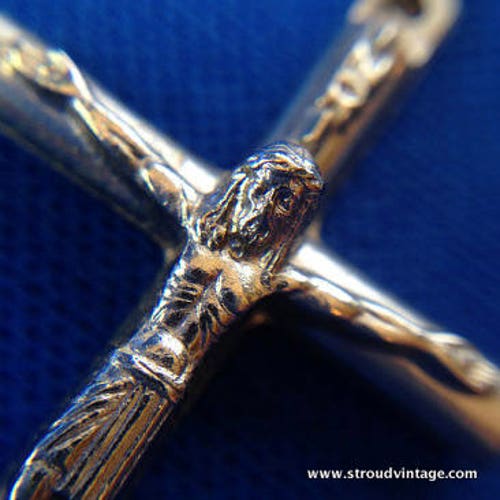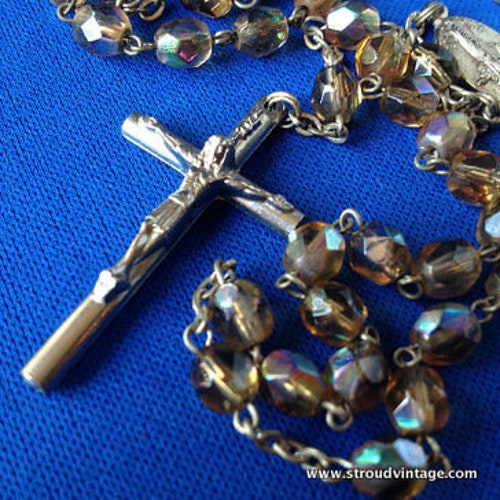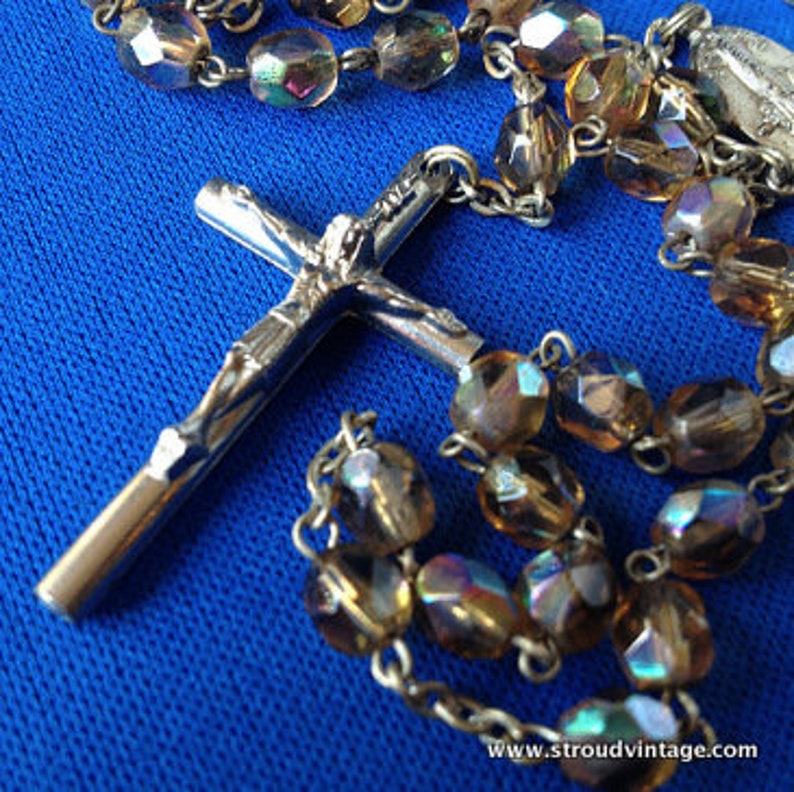Vintage Rosary with Crucifix in Bohemian Crystal online with Medugorje Medallion in Unmarked White Metal
Bohemian Crystal and Unmarked Silver Rosary Crucifix
A beautiful silver crucifix
on a Bohemian aurora borealis amber crystal rosary.
The rosary measures 24 inches with a 6 inch drop.
There is a small medallion featuring the word 'Medugorje'
referring to a religious sighting in 1981 in Bosnia
attached to the clasp.
A wonderful collectible Rosary
A really special piece
Bohemian glass, chiefly referred to as Bohemia crystal, is glass produced in the regions of Bohemia and Silesia, now parts of the Czech Republic. It has a centuries long history of being internationally recognised for its high quality, craftsmanship, beauty and often innovative designs. Hand-cut, engraved, blown and painted decorative glassware ranging from champagne flutes to enormous chandeliers, ornaments, figurines and other glass items are among the best known Czech exports and immensely popular as tourist souvenirs. The Czech Republic is home to numerous glass studios and schools attended by local and foreign students.
Oldest archaeological excavations of glass-making sites date to around 1250 and are located in the Lusatian Mountains of Northern Bohemia. Most notable Czech sites of glass-making throughout the ages are Skalice (German: Langenau), Jablonec nad Nisou, Železný Brod, Poděbrady, Karlovy Vary, Kamenický Šenov (German: Steinschönau) and Nový Bor (German: Haida). Several of these towns have their own glass museums with many items dating since around 1600. Jablonec nad Nisou in particular is famous for the local tradition of manufacturing glass costume jewellery. Its long history is documented by large collections in the Museum of Glass and Jewellery in Jablonec nad Nisou.
There are online differing views on the history of the Rosary. The exact origin of the Rosary as a prayer is less than clear and subject to debate among scholars.
Prayer beads may have their origins in the Eastern religions in India in the 3rd century BC. The use of knotted prayer ropes in Christianity goes back to the Desert Fathers in the 3rd and early 4th centuries. These counting devices were used for prayers such as the Jesus prayer in Christian monasticism. The period after the First Council of Ephesus in 431 witnessed a gradual growth in the use of Marian prayers during the Middle Ages.
According to some Catholic traditions, the Rosary was given to Saint Dominic in a vision of the Blessed Virgin Mary and it was then promoted by Blessed Allan de la Roche. However, not all Catholics agree with that tradition. Some historians see a more gradual development for the Rosary, in that the repetition of Marian prayers which form the basis of the Rosary needed counting devices, which resulted in the modern form of the Rosary prayed on beads.
The practice of meditation during the praying of the Hail Marys was attributed to Dominec of Prussia, a 15th-century Carthusian monk, who called it "Life of Jesus Rosary" (vita Christi Rosary). However, in 1977, a theologian from Trier named Andreas Heinz discovered a vita Christi Rosary that dated to 1300, suggesting the origin of the current rosary extends back at least to that time. The Christian victory at the Battle of Lepanto in 1571 was attributed to the praying of the Rosary by masses of Europeans based on the request of Pope Pius V and eventually resulted in the Feast of Our Lady of the Rosary. In 1569, the papal bull Consueverunt Romani Pontifices established the devotion to the rosary in the Catholic Church. In 2002 Pope John Paul II introduced the Luminous Mysteries as an option in an Apostolic Letter on the Rosary, Rosarium Virginis Mariae.
Our price is £65
